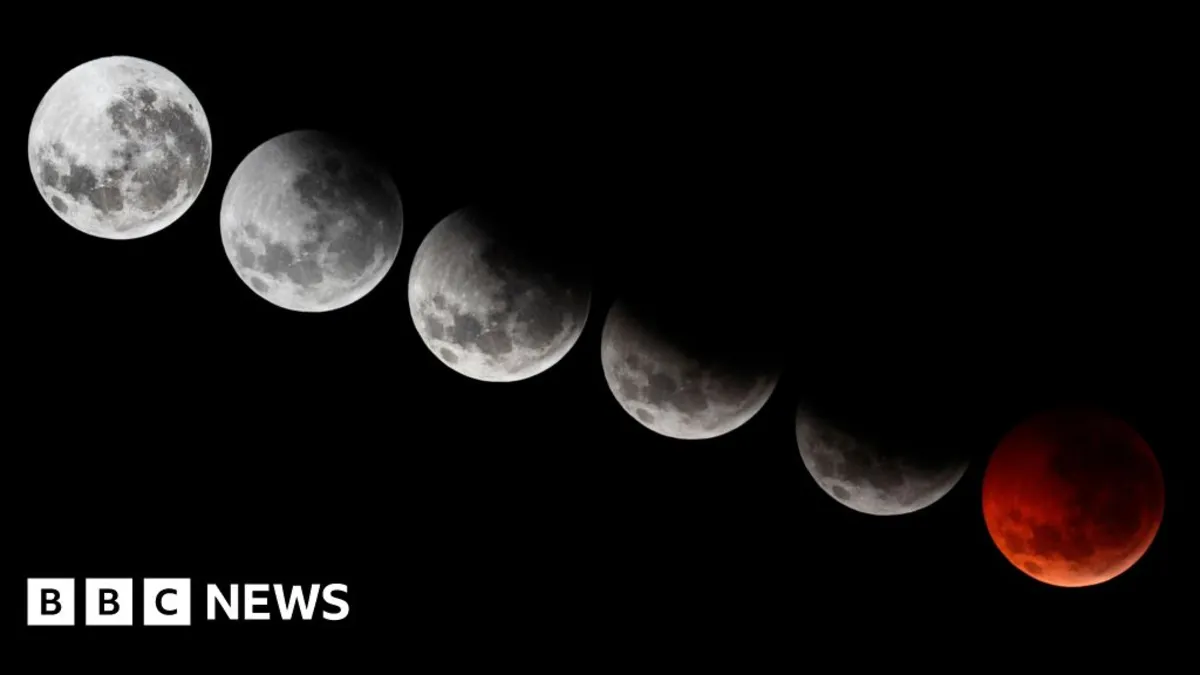
Stargazers in the UK are in for a celestial treat this week as a partial lunar eclipse is set to occur just before dawn on Friday. As Earth casts its shadow over the Moon, early risers will have the opportunity to witness a dramatic spectacle, weather permitting. Although the eclipse will only be partial in the UK, it promises to be an awe-inspiring experience as the Moon gradually darkens and transforms into a dusky red, resulting in a captivating blood moon.
The penumbral phase of the eclipse, marking the moment when the Moon first enters Earth's outer shadow, will commence at 03:57 on Friday. Following this, the partial eclipse will begin at 05:09, when the Moon starts moving into the darker part of Earth's shadow. While the true maximum of the eclipse will occur at 06:58, by that time, the Moon will have already set below the horizon in the UK, making it invisible to observers here. However, for those located in North America, much of South America, and western Greenland, the eclipse will be total, allowing for a full view of this spectacular event.
A lunar eclipse takes place when Earth positions itself directly between the Sun and the Moon, effectively blocking sunlight and casting a shadow over the Moon's surface. There are three main types of lunar eclipses:
Total lunar eclipse – The entire Moon moves into Earth's shadow, resulting in a striking red color. Partial lunar eclipse – Only a portion of the Moon enters Earth's shadow, creating a visible dark section. Penumbral lunar eclipse – A subtle event where the Moon passes through Earth's outer shadow, causing a slight dimming.The phenomenon known as a blood moon occurs during a lunar eclipse when the Moon takes on a deep, coppery red hue. This effect is caused by a process known as Rayleigh scattering, which also influences the colors we see in the sky. The scattering of shorter blue wavelengths allows longer red wavelengths to remain visible. During a lunar eclipse, all light illuminating the Moon has passed through Earth's atmosphere, making it seem as if every sunrise and sunset from around the world is projected onto the lunar surface.
To enjoy the best view of the upcoming eclipse, it is recommended to find a clear, dark location. Imo Bell, an astronomer at the Royal Observatory in Greenwich, suggests, "My top tip would be to ensure you have a good view of the western horizon, as the Moon will be setting in that direction." Additionally, since it will be dark, bringing a light source is advisable. If possible, use a red torch to help maintain your night vision while navigating your surroundings. It’s also essential to check the weather forecast beforehand, as cloud cover could obstruct your view. While lunar eclipses may not be exceedingly rare, the next opportunity to observe one could be marred by unfavorable weather conditions.
For those who miss this upcoming lunar eclipse, mark your calendars for the next one visible in the UK, which will occur on 7 September 2025. Don't miss out on the chance to experience the wonders of the night sky!